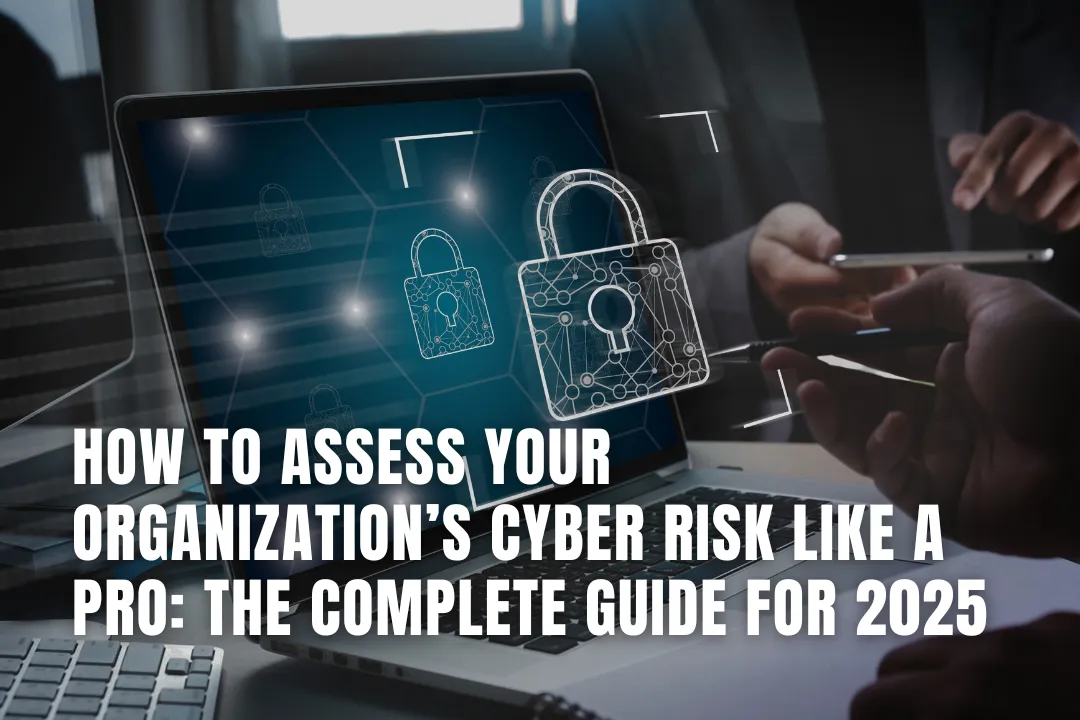
In today’s hyper connected digital economy, cyber threats have moved far beyond the IT department. They’re now one of the top strategic risks facing modern businesses.
Regardless of your position, startup founder, SMB owner, or enterprise executive, not accurately evaluating the cyber risk to your company can result in expensive disruptions, monetary losses, legal issues, and a serious blow to your reputation. Indeed, research indicates that within six months of a cyberattack, almost 60% of small businesses cease operations.
So, how do you evaluate cyber risk like an expert? From comprehending the significance of cybersecurity risk assessments to carrying out an in-depth, realistic, and strategic assessment that genuinely safeguards your company, this guide takes you through every step of the process.
An organised method for identifying digital threats, identifying vulnerabilities, assessing potential impact, and prioritising mitigation efforts is a cybersecurity risk assessment.
To put it simply, it's about identifying your company's weak points and acting before something goes wrong.
Why it matters: Strong cyber resilience is built on a well-conducted assessment. It supports operational continuity, guarantees regulatory compliance (think GDPR, HIPAA, and PCI-DSS), and aids in the protection of sensitive data.
Risk assessments are emphasised as essential elements of a successful cyber defense strategy by cybersecurity frameworks such as NIST, ISO 27001, and CIS Controls.
The landscape of global threats is changing more quickly than before. Organisations experienced unprecedented data breaches in 2023 alone, as threat actors used ransomware-as-a-service, AI-powered phishing, and zero-day exploits to access private systems.
In 2025, a proactive cyber risk assessment is imperative for the following reasons:
If you wait until after a breach to evaluate your cyber posture, you’re already too late.
Are you still perplexed as to why this matters? Your company benefits from taking cyber risk seriously in the following ways:
Let's divide the procedure into five distinct, doable stages. Leading cybersecurity experts like Trend Micro, CrowdStrike, and the NIST Cybersecurity Framework have recommended best practices, which this blueprint complies with.
Make an inventory first. Inquire:
Among your "crown jewels" could be:
Sort these according to their business impact, or what would be most disrupted if compromised.
It's time to examine your areas of weakness now. Seek out:
Additionally, take into account outside dangers like:
To find out what might not be immediately apparent, use penetration tests and vulnerability scanning tools.
Every risk is different. Some, like spam phishing, are extremely likely but have little effect, while others, like a full-scale ransomware lockdown, are uncommon but disastrous.
Utilise a risk matrix to assess:
These two variables can be used to determine risk scores, which you can then utilise to help you prioritise tasks.
After assigning a score to your risks, classify them:
By addressing the most important issues first, this strategy guarantees that you're making the most of your limited time and financial resources.
Among the mitigation techniques are:
Assign tasks, establish due dates, and monitor advancement.
Pro tip: To keep your cybersecurity tasks transparent and well-organised, use a GRC platform or project management tool.
It is insufficient to conduct a risk assessment just once.
Your IT environment is ever-evolving. Every change brings with it a new risk: new tools, new personnel, new integrations.
A mindset of constant assessment is necessary for modern cybersecurity. Consider it akin to medical examinations. Assessing more often will help you identify problems before they become more serious.
Consider conducting quarterly risk assessments and utilising continuous monitoring tools, particularly following significant events such as system upgrades, acquisitions, or policy changes.
Lack a specialised security team? It's alright. Smaller teams or non-technical founders can still achieve significant progress in the following ways:
Steer clear of these pitfalls that could compromise your cybersecurity efforts:
Cyber resilience equates to business resilience in 2025 and beyond.
In addition to being safer, businesses that comprehend and control digital risks are also more dependable, flexible, and well-positioned for expansion. They can demonstrate compliance in audits, maintain service during outages, and react to change more quickly.
Nowadays, cybersecurity is more than just an IT task. It facilitates business.
The most important lesson, if you've read this far, is that cyber risk assessment is not only a smart idea, but also necessary to safeguard your people, your data, and your future.
Although you don't need to become an expert in cybersecurity right away, you do need to be aware of your vulnerability and take responsibility for lowering it. For businesses looking to take the next step, assessing your organisation's cyber risk with expert guidance and tailored cybersecurity assessment services.
Checklist for Action:
Yesterday was the ideal time to begin. Now is the second-best time.
About the Author
Vince Louie Daniot is a veteran digital strategist and SEO expert who specialises in helping B2B companies secure their operations and scale sustainably. With deep experience in cybersecurity, ERP solutions, and digital transformation, Vince translates complex tech topics into actionable insights that drive business growth.
A cyber risk assessment is the process of identifying, analyzing, and evaluating an organization's potential vulnerabilities to cyber threats.
It helps organizations understand their security posture, prioritize risks, and implement appropriate security measures to protect their assets.
Ideally, a cyber risk assessment should be conducted at least annually, or more frequently if there are significant changes to the organization's IT environment or threat landscape.
Common cyber threats include malware, phishing, ransomware, denial-of-service attacks, and insider threats.
Key components include identifying assets, assessing vulnerabilities, analyzing threats, evaluating risks, and recommending security controls.
Implement strong passwords, use multi-factor authentication, keep software updated, train employees on security awareness, and regularly monitor your systems for suspicious activity.